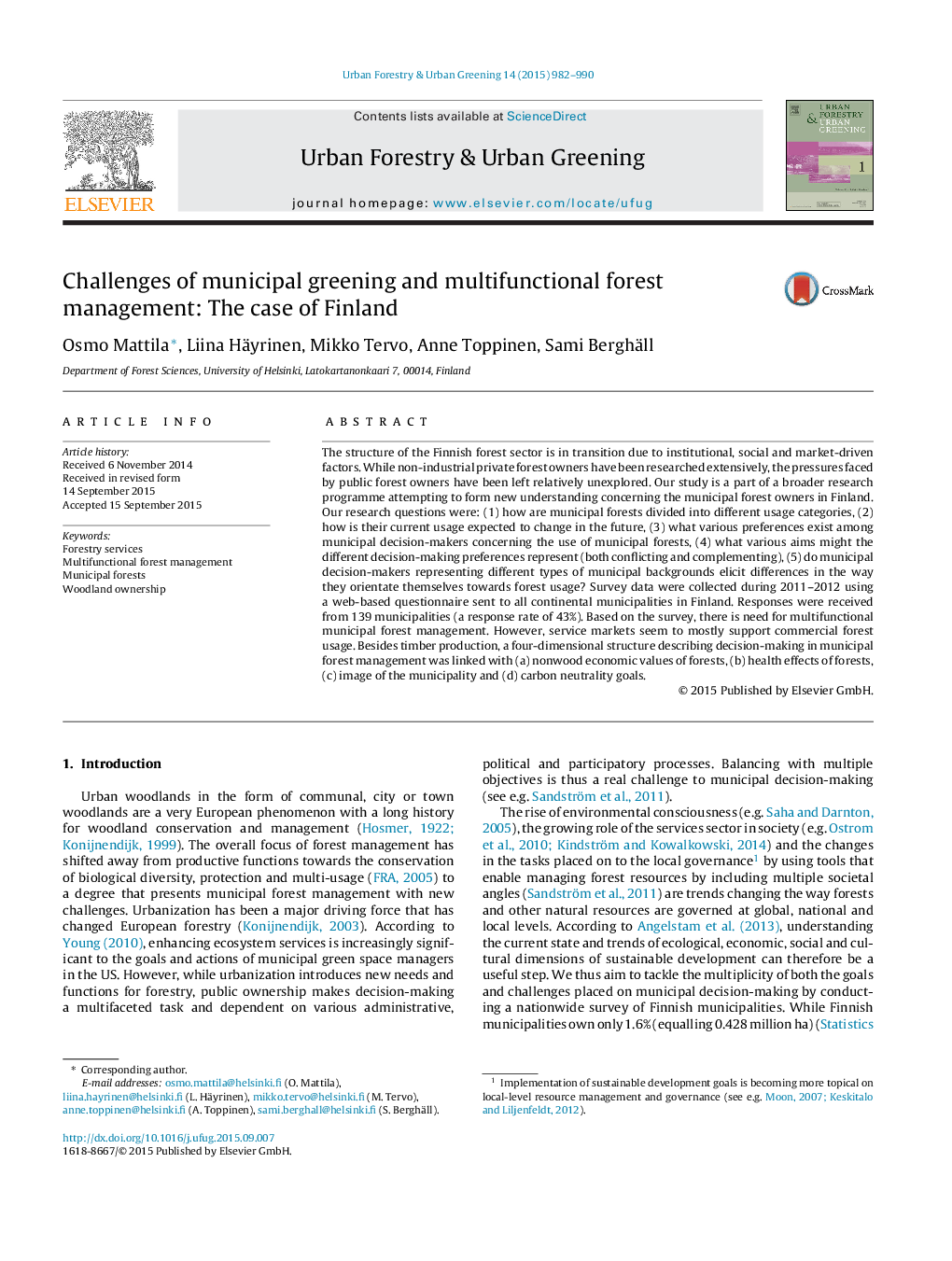| Article ID | Journal | Published Year | Pages | File Type |
|---|---|---|---|---|
| 10252105 | Urban Forestry & Urban Greening | 2015 | 9 Pages |
Abstract
The structure of the Finnish forest sector is in transition due to institutional, social and market-driven factors. While non-industrial private forest owners have been researched extensively, the pressures faced by public forest owners have been left relatively unexplored. Our study is a part of a broader research programme attempting to form new understanding concerning the municipal forest owners in Finland. Our research questions were: (1) how are municipal forests divided into different usage categories, (2) how is their current usage expected to change in the future, (3) what various preferences exist among municipal decision-makers concerning the use of municipal forests, (4) what various aims might the different decision-making preferences represent (both conflicting and complementing), (5) do municipal decision-makers representing different types of municipal backgrounds elicit differences in the way they orientate themselves towards forest usage? Survey data were collected during 2011-2012 using a web-based questionnaire sent to all continental municipalities in Finland. Responses were received from 139 municipalities (a response rate of 43%). Based on the survey, there is need for multifunctional municipal forest management. However, service markets seem to mostly support commercial forest usage. Besides timber production, a four-dimensional structure describing decision-making in municipal forest management was linked with (a) nonwood economic values of forests, (b) health effects of forests, (c) image of the municipality and (d) carbon neutrality goals.
Related Topics
Life Sciences
Agricultural and Biological Sciences
Forestry
Authors
Osmo Mattila, Liina Häyrinen, Mikko Tervo, Anne Toppinen, Sami Berghäll,
